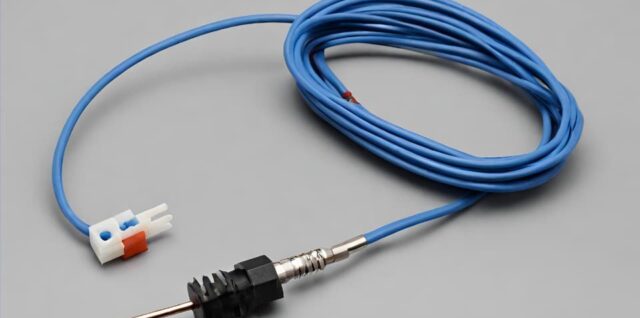Weather forecasting is a complex and crucial endeavor that impacts our daily lives in numerous ways. Whether it’s planning a weekend getaway, preparing for a storm, or optimizing agricultural practices, accurate weather predictions are essential. At the heart of this endeavor lies a critical component – outside temperature sensors. In this blog post, we will delve into the significance of controls outside temperature sensors in weather forecasting and explore how they contribute to more precise and reliable predictions.
Understanding Weather Forecasting
Weather forecasting is the science of predicting atmospheric conditions based on the analysis of various meteorological variables. These variables include temperature, humidity, pressure, wind speed and direction, and precipitation. Temperature, in particular, is a fundamental parameter as it influences weather patterns, such as the movement of high and low-pressure systems, the formation of clouds, and the likelihood of precipitation.
The Importance of Accurate Temperature Data
Accurate temperature data is essential for several reasons in weather forecasting:
Thermodynamics: Temperature affects the density of air, which, in turn, influences atmospheric pressure. This pressure variability drives the movement of air masses and weather systems.
Precipitation Type: Whether it will rain, snow, sleet, or hail depends on the temperature at various atmospheric levels. Precise temperature measurements help determine the type of precipitation expected.
Severe Weather Events: Temperature plays a key role in the formation of severe weather events like thunderstorms and tornadoes. Monitoring temperature changes can provide early warnings.
Types of Outside Temperature Sensors
To gather temperature data, meteorologists rely on a variety of outside temperature sensors. These sensors can be broadly categorized into two types:
Traditional Sensors: These sensors often use liquid-in-glass thermometers, bimetallic coils, or other mechanical devices to measure temperature. While they have been used for decades, they are gradually being replaced by more advanced digital sensors.
Digital Sensors: Modern digital sensors use electronic components like resistance temperature detectors (RTDs) or thermocouples to measure temperature with precision. They offer faster response times, higher accuracy, and greater reliability.
How Outside Temperature Sensors Work
Outside temperature sensors, whether traditional or digital, operate on the principle that temperature affects certain physical properties. For example:
- RTDs measure temperature by tracking changes in electrical resistance.
- Thermocouples generate a voltage proportional to temperature differences.
- Infrared sensors detect the heat emitted by objects, providing non-contact temperature measurements.
These sensors are strategically placed in various outdoor locations to continuously monitor temperature changes.
Data Collection and Transmission
The data collected by Belimo outside temperature sensors are transmitted to weather forecasting centers. This transmission can occur through various means, including ground-based weather stations, satellites, and even personal weather stations maintained by weather enthusiasts. The data is then integrated into complex computer models that simulate the Earth’s atmosphere.
Weather Models and Predictive Algorithms
Meteorologists use advanced weather models and predictive algorithms to process temperature data and create weather forecasts. These models take into account not only temperature but also other meteorological variables like humidity, wind, and pressure. By analyzing historical data and current conditions, meteorologists make predictions about future weather patterns.
Real-world Applications
Controls outside temperature sensors have made a significant impact on weather forecasting in the real world. They have contributed to more accurate and timely predictions, leading to better-informed decisions in various sectors:
Agriculture: Farmers use weather forecasts to plan planting and harvesting times, reducing the risk of crop damage due to adverse weather conditions.
Transportation: Airlines, shipping companies, and transportation services rely on accurate weather forecasts to optimize routes and schedules, enhancing safety and efficiency.
Emergency Management: Early warnings based on temperature data help emergency management agencies prepare for and respond to natural disasters like hurricanes, floods, and wildfires.
Challenges and Advancements
While outside temperature sensors have greatly improved weather forecasting, challenges remain. Maintaining sensor accuracy, dealing with extreme weather conditions, and enhancing data collection in remote areas are ongoing challenges. However, advancements in sensor technology, satellite capabilities, and computational modeling continue to push the boundaries of weather forecasting accuracy.
The Future of Weather Forecasting
As technology continues to advance, controls outside temperature sensors will play an increasingly critical role in weather forecasting. High-resolution data from a network of sensors, combined with powerful supercomputers, will lead to more detailed and accurate weather predictions. This will enable us to better prepare for and adapt to changing weather patterns in our rapidly evolving world.
Conclusion
Controls outside temperature sensors are unsung heroes in the realm of weather forecasting. Their ability to provide accurate and timely temperature data is instrumental in creating reliable weather predictions. As we continue to face challenges related to climate change and extreme weather events, the role of outside temperature sensors will only become more pivotal in helping us make informed decisions and safeguard our communities and resources.
